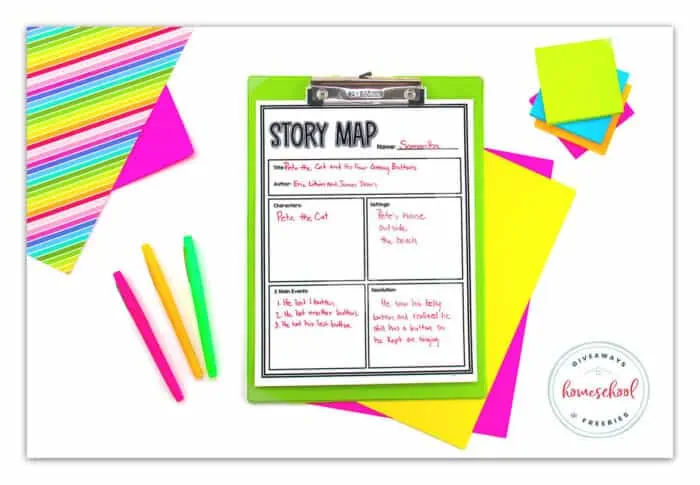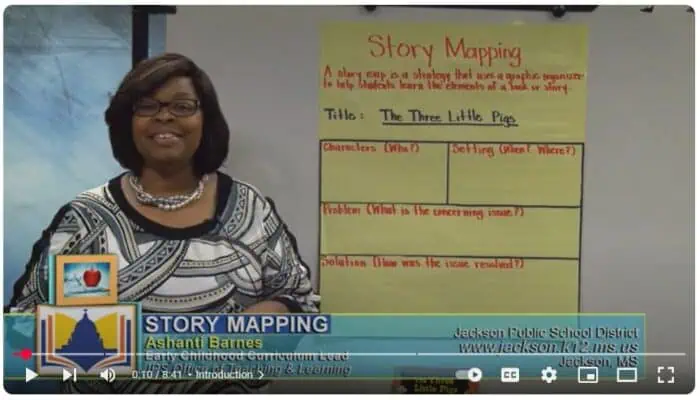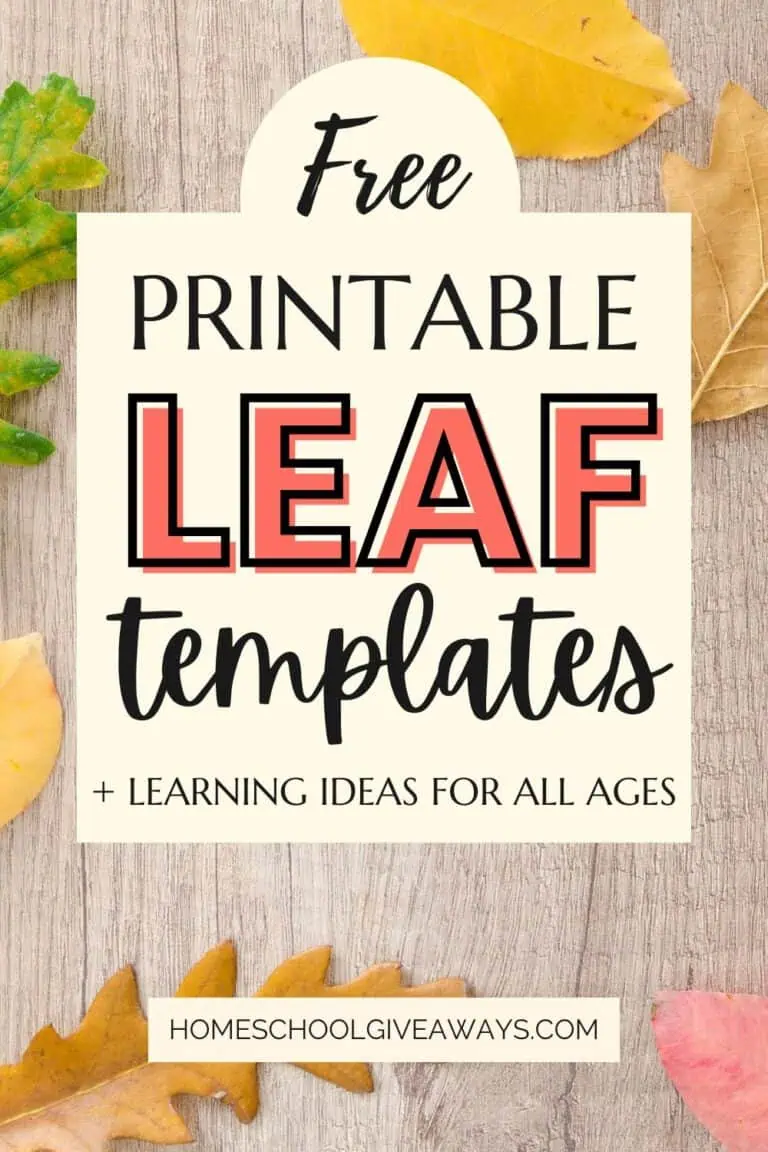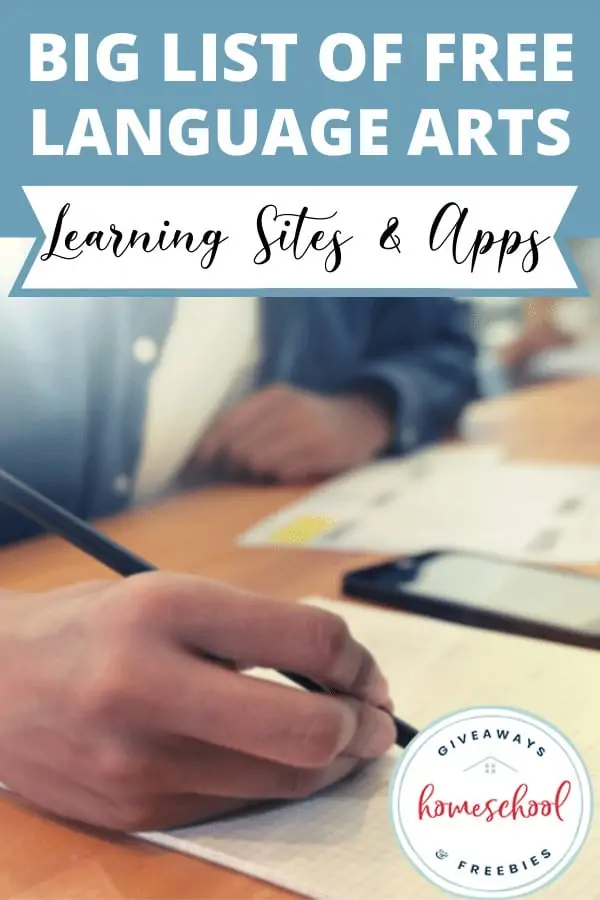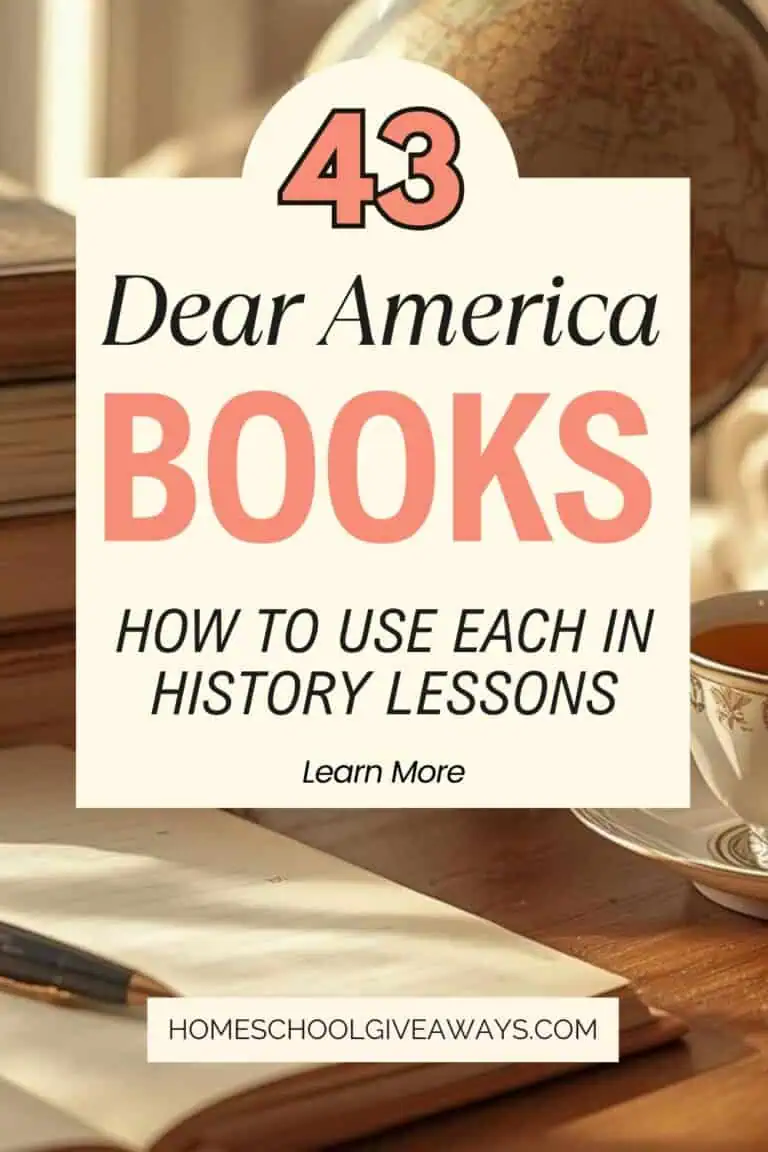5 FREE Story Map Graphic Organizer Templates for Students
Published:
August 30, 2025

Contributor:
Charis King
Disclosure: This post may contain affiliate links, meaning if you decide to make a purchase via my links, I may earn a commission at no additional cost to you. See my disclosure for more info.
If you’ve ever watched your kids finish a book, close the cover, and then completely forget what happened, you’re not alone. That’s where a story map graphic organizer comes to the rescue.

A story map is a great way to help your kids slow down, think critically, and really notice the key elements of a story. Instead of rushing to the end of the story, they’ll start paying attention to the main characters, the setting, the problem, and how everything comes together in the resolution.
And you don’t need anything fancy to get started. We’ve got some free story map graphic organizer printables you can use right now. Just print a page, grab your child’s favorite book, and watch how quickly their comprehension grows.
What Is a Story Map Graphic Organizer?
At its core, a story map is a visual tool that helps kids organize the important details of what they’ve read. You and your kids can use it to record:
- The title of the story and author
- Main ideas or main events
- Main characters and minor characters
- The setting (where and when the story takes place)
- The problem and how it’s solved
- The sequence of events leading to the end of the story
- The theme of the story
It’s a perfect tool for younger students who need guidance, and a valuable tool for older students who are ready to dig into character development, story structure, and even complex stories.
See a Story Map in Action
Sometimes it helps to watch someone use a story map before you try it yourself. Here’s a short YouTube video that demonstrates how to fill out a story map graphic organizer with a book. It opens in a new tab so you can watch and come right back to your lesson.
Why Parents Love Story Maps
If you’re homeschooling, you’re always on the lookout for ways to make reading stick. A story map graphic organizer is one of those low-prep, high-impact printables that works across the board.
- It gives your kids a visual representation of what they read.
- It’s flexible enough for elementary school students, middle school learners, and even high school students.
- It doubles as a planning sheet for book reports or creative writing assignments.
- It builds reading comprehension skills by making kids stop and think instead of racing through the pages.
You’ll love story maps because they keep reading and writing from feeling overwhelming. Your kids will love them because they turn books into something they can see and explain in a simple, visual way.
How You Can Use Story Maps at Home
There’s no one “right way” to use a story map graphic organizer. That’s the beauty! They’re flexible, practical, and can grow with your child. Here are some different types of story maps in action:
- Younger students (K-2): Hand your child a story map with large boxes. After reading a picture book, let them draw the beginning, middle, and end of the story. Even if they aren’t writing yet, they’re learning how stories are structured.
- Elementary school students (3-5): Try mapping out fairy tales or fables. Your kids can record the main characters, setting, and problem. Then ask them to explain the theme of the story in their own words.
- Middle schoolers: Use a plot diagram organizer for a novel like Hatchet. Have them track rising action, climax, and resolution. This sharpens their critical thinking and prepares them for literary analysis.
- High school students: Challenge older kids to map more complex stories or nonfiction. They can compare characters’ traits, note themes, and evaluate how character development affects the story’s outcome.
Print & Go: Free Story Map Graphic Organizer Templates
Below you’ll find five different story map templates you can download and print today. Each one works a little differently, so you can choose the version that best fits your child’s age and learning style.
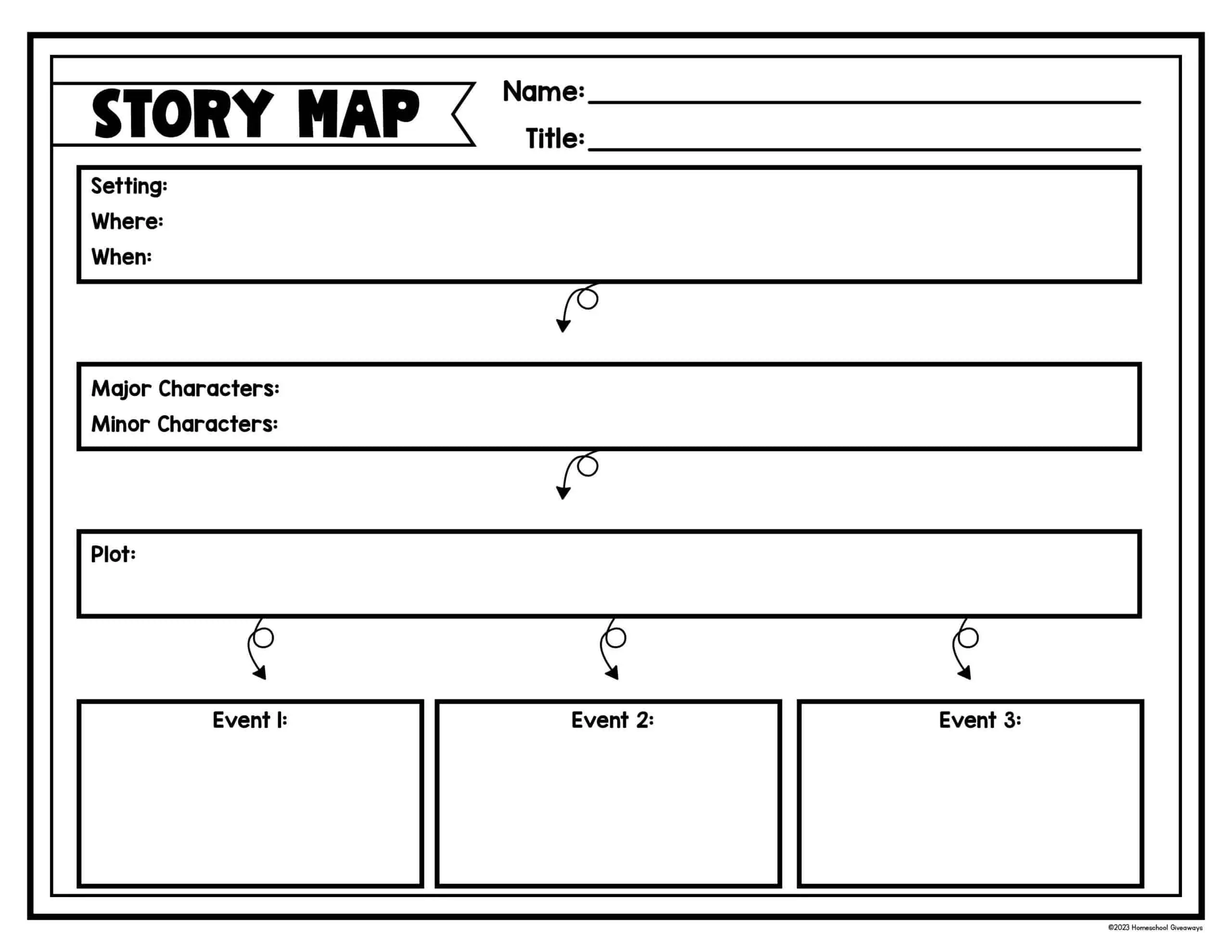
Story Map Template #1 – Classic Organizer
This classic template that covers all the essential elements of a story: title, setting, characters, problem, solution, and main events. Try it with a timeless favorite like Charlotte’s Web where kids can add Fern, Wilbur, and Charlotte, the barn setting, the problem of Wilbur’s fate, and the main events that lead to the solution.
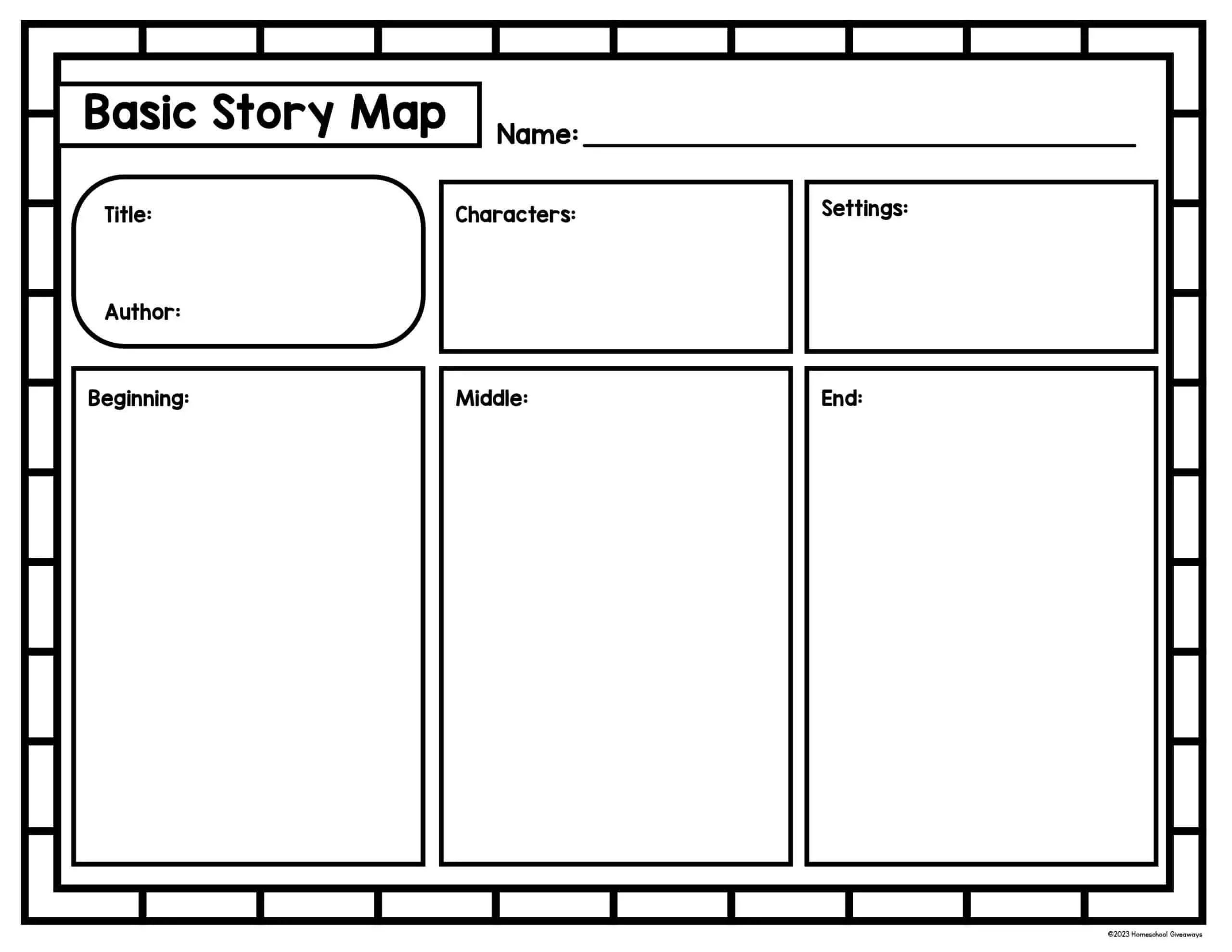
Story Map Template #2 – Beginning, Middle, End
If your kids are just starting out, this template is a great way to focus on the sequence of events. Similar to the younger kids version below (but without the added pictures). There is room for older students to add short written descriptions and/or draw pictures related to the sequence.
For example, you might use this with The BFG by Roald Dahl. Your child can map Sophie meeting the BFG at the beginning, their adventures to stop the other giants in the middle, and the story’s resolution when the giants are captured. This helps them practice identifying main events and understanding how the story unfolds.
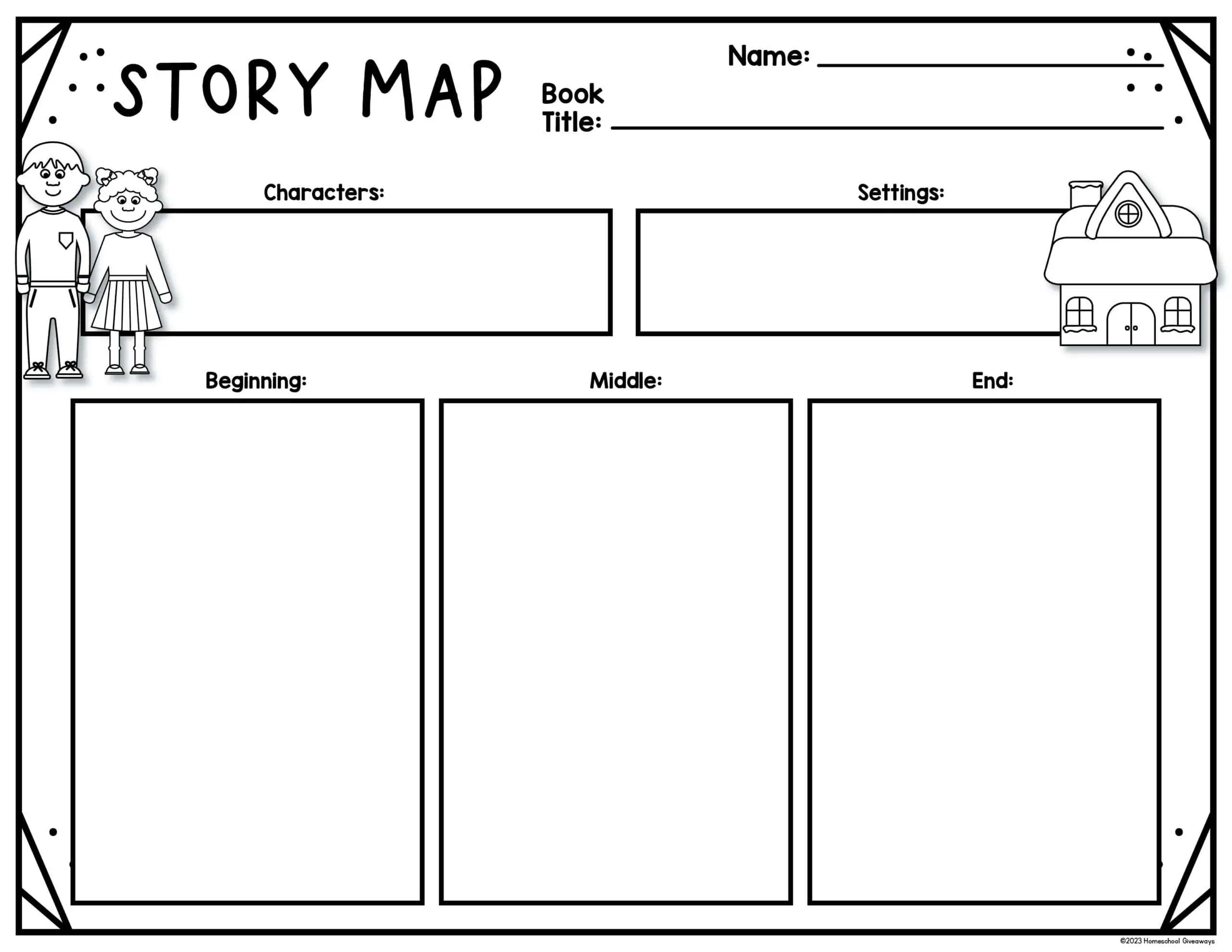
Story Map Template #3 – Beginning, Middle, End (Draw-Only Version)
Designed for early learners who aren’t writing yet, this template uses large open boxes so children can draw what happened at the beginning, middle, and end of the story.
Try it with The Very Hungry Caterpillar – kids can illustrate the caterpillar munching, his transformation inside the cocoon, and the butterfly emerging at the end.

Story Map Template #4 – Plot Diagram
Perfect for older students who are ready to study story structure. This template includes rising action, climax, falling action, and resolution. It’s a natural fit for middle school or high school readers working with more complex stories.
For example, use it with The Lion, the Witch, and the Wardrobe to trace the children’s arrival in Narnia, the battle with the White Witch, and the story’s resolution.

Story Map Template #5 – Bubble or Venn Diagram
Some kids think best in circles. This option lets them organize information in overlapping spaces – ideal for comparing characters, settings, or outcomes.
Try it with Cinderella and The Rough-Face Girl to compare and contrast two fairy tales with similar story elements but very different settings and cultural details.
Unlock Every Printable with the All-Access Library
If you love these story map templates, you’ll be thrilled to know they’re just a small part of our All-Access Library. With over 1,400 printables for every subject and age, this library is a great way to save time and keep your homeschool organized. Instead of hunting for individual resources, you can search the database and download everything you need in one place – from reading and writing tools to math, science, history, and more.
These story map organizers are included, along with hundreds of other ready-to-use activities that let you focus on teaching instead of prep. Grab your All-Access Library Pass today and have everything at your fingertips.
Springboard Learning Ideas
Want to stretch these organizers even further? Here are a few creative ways to weave story maps into your homeschool:
- Literature tie-ins: Choose one of the books in the Magic Tree House adventure series. Have your child map Jack and Annie as the main characters, record the setting (prehistoric times, ancient Egypt, or another historical location), and track the sequence of events. For older kids, go a step further by identifying the theme of the story-whether it’s curiosity, courage, or teamwork. Along the way, encourage them to notice the historical or scientific details woven into the adventure to make connections between reading, history, and science.
- History connections: Pair story maps with historical fiction. Reading Number the Stars? Have your child identify the important elements of a story (characters, setting, conflict) while also noticing the important details of WWII Denmark.
- Family movie night: Watch Finding Nemo and then fill out a story map graphic organizer pdf together. It’s a fun way to sneak in a little learning without your kids even realizing it.
- Creative writing: Before your child writes their own story, have them plan it out on an organizer. It’s a powerful tool for brainstorming elements of a book before they ever put pencil to paper.
- Book reports: Instead of facing a blank page, let your kids start with a story map. They’ll already have the structure for a solid report when they’re done.
👉 Want to make story maps reusable? Slip them into dry erase pockets so your kids can practice again and again. Add colored pencils for drawing versions or children’s literature anthologies for ready-to-use short stories.
Ready to Try Story Maps?
Story maps are a valuable tool that make books come alive for your kids. Whether you’re working with younger students on fairy tales, challenging older students with novels, or sneaking in learning through movies, these organizers will become one of your favorite homeschool resources.
Print a story map graphic organizer, grab a book, and dive in. You’ll see your kids’ confidence grow as they learn to identify the important elements of a story, and you’ll love how easy it is to guide them through.
You Might Also Like…
